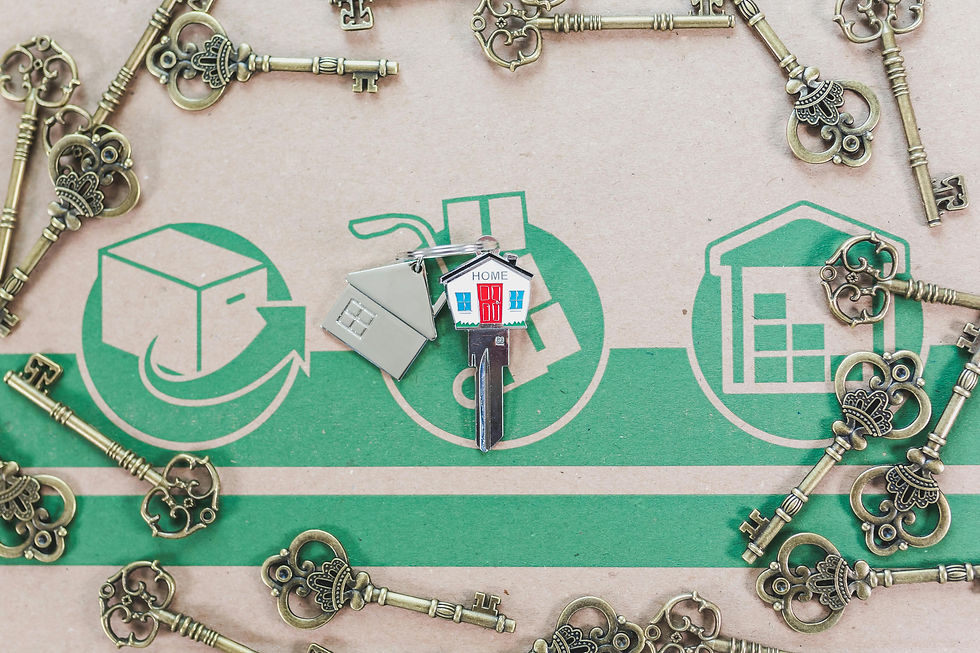Operating Expenses 101: What NYC Real Estate Investors Must Know Before Buying a Rental Property
- gary wang
- May 14
- 3 min read
🏙️ What Are Operating Expenses in NYC Real Estate?
Operating expenses (OPEX) are the day-to-day costs of managing and maintaining a property, whether it's a multi-family apartment building, mixed-use property, or commercial space in New York City. Unlike capital expenditures (CapEx), which are large one-time improvements, operating expenses are recurring and predictable.
For investors, understanding OPEX is crucial for:
Accurately calculating Net Operating Income (NOI)
Estimating cash flow
Determining Cap Rates
Making smart investment decisions
🧾 Core Operating Expenses NYC Investors Should Expect
🏦 1. Property Taxes
NYC uses a complex property classification system. Class 2 and Class 4 properties (multi-family and commercial, respectively) have different rules and assessment methods. In some areas, property tax can be 30%+ of operating costs.
📍Pro tip: Look up taxes on the NYC DOF Property Tax page.
🏢 2. Insurance Costs
Landlords in NYC typically carry:
General liability insurance
Property hazard insurance
Optional: Loss of rent and terrorism coverage
In NYC, premiums range widely, but for commercial properties or mixed-use buildings, expect $2,500–$10,000+ annually depending on use and location.
🛠️ 3. Repairs & Maintenance
Operating expenses must cover both routine maintenance (cleaning, landscaping, HVAC service) and minor repairs (leaky pipes, door replacements). For older NYC buildings, especially pre-war structures, expect higher maintenance needs.
📍Example: A 6-unit brownstone in Brooklyn may require $8,000–$12,000/year in upkeep.
👥 4. Property Management Fees
In NYC, if you’re not managing the property yourself, management firms typically charge 6–10% of monthly gross rent, plus leasing or legal fees.
Tasks they handle:
Rent collection
Building code compliance
Repairs and tenant communication
📍Bonus tip: Look for firms familiar with rent-stabilized and HPD-compliant buildings.
🏚️ 5. Vacancy & Credit Loss
Even in hot markets, units don’t stay rented 100% of the time. Most investors reserve 5–10% of gross rental income for vacancies and missed rent payments.
🔌 6. Utilities and Building Services
These include:
Water & sewer charges (often billed quarterly by NYC)
Heating (gas/oil for radiators)
Electricity for common areas
Snow removal, garbage disposal (especially for commercial buildings)
Annual building inspections (elevator, sprinkler systems, etc.)
📍Note: Commercial tenants often pay some utilities directly — check lease terms.
💡 7. Legal, Regulatory & Admin Fees
Especially relevant in NYC:
HPD registration
Legal costs for tenant disputes
Local Law 97 compliance for emissions (commercial & multi-family over 25,000 sq ft)
DOB & FDNY inspections
Non-compliance with local laws can result in thousands in fines — a real threat to your NOI.
🧮 Example: Operating Expense Breakdown for a 6-Unit Mixed-Use Property in Brooklyn
Expense Type | Annual Cost (Est.) |
Property Tax | $18,000 |
Insurance | $4,000 |
Property Management | $7,200 (8% of rent) |
Repairs & Maintenance | $10,000 |
Utilities | $6,000 |
Legal/Admin Fees | $2,500 |
Vacancy Reserve (5%) | $4,500 |
Total Operating Expenses | $52,200 |
🧾 Other Common Operating Expenses for NYC Properties
Pest Control Services: Monthly or quarterly exterminator visits, especially in older buildings.
Janitorial/Cleaning Services: For lobbies, hallways, and common areas (especially in commercial or mixed-use properties).
Landscaping and Snow Removal: Seasonal costs that add up fast in NYC winters.
Elevator Maintenance Contracts: Required for buildings with elevators; often a monthly service.
Security Systems & Monitoring: Surveillance, entry systems, and on-site security personnel.
Trash Collection (Private): Required for many commercial tenants or larger buildings not serviced by the city.
Licensing & Permit Renewals: DOB, FDNY, and HPD requirements can include recurring registration fees.
Software or Technology Subscriptions: Tools like accounting platforms, rent collection systems, or building maintenance trackers.
These "hidden" operating costs should be factored into your annual budget and reflected in your underwriting when analyzing a deal.

📈 How Operating Expenses Affect Your Bottom Line
To analyze investment returns, use the formula:
Net Operating Income (NOI) = Gross Rental Income – Operating Expenses
Cap Rate = NOI / Purchase Price
If your NOI is squeezed by high operating costs (like an aging elevator system or inefficient boiler), your returns can drop even if your rents are high.
🚀 Final Thoughts: NYC Real Estate Success Starts with Smart Expense Planning
The NYC market offers incredible upside — but also some of the highest operating costs in the country. Building a detailed OPEX model early can:
Protect your margins
Improve financing terms
Reduce surprises
Keep your property compliant and profitable
Good opportunities are available if you understand the local market and ways to reduce operating expenses.




Comments